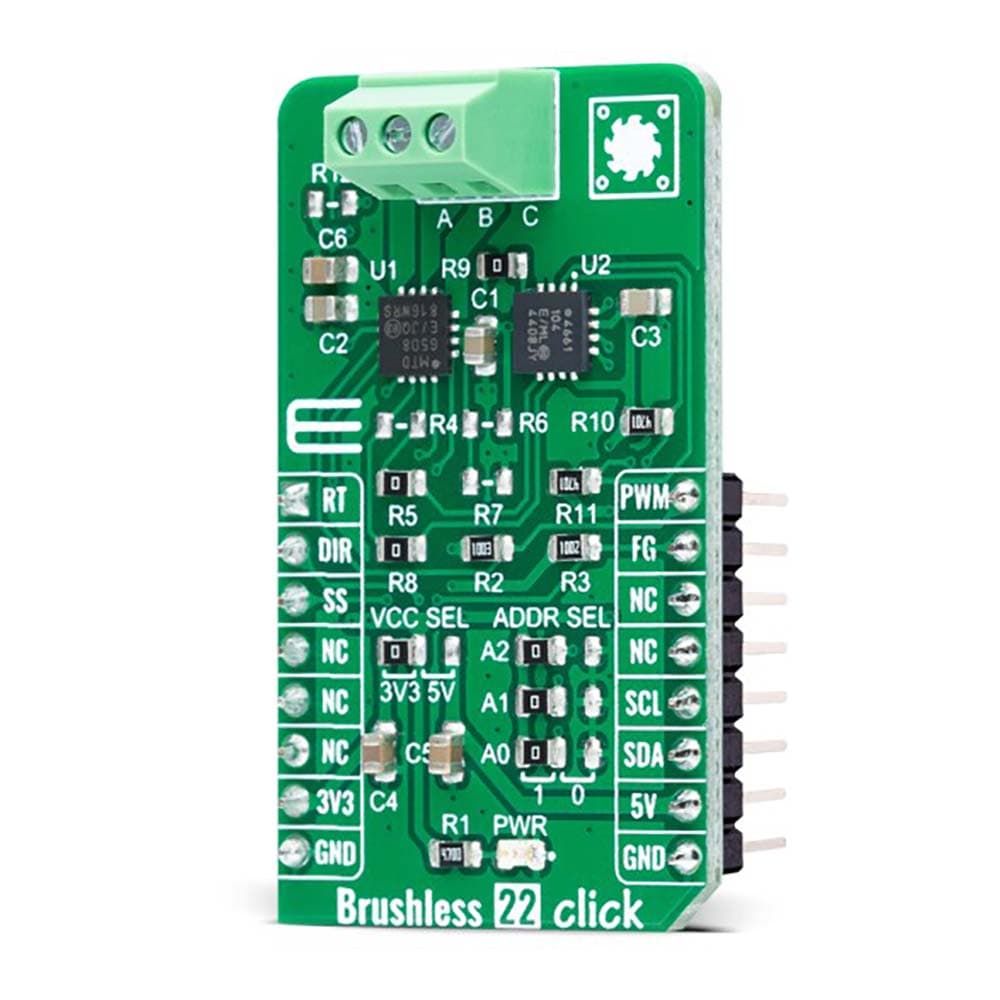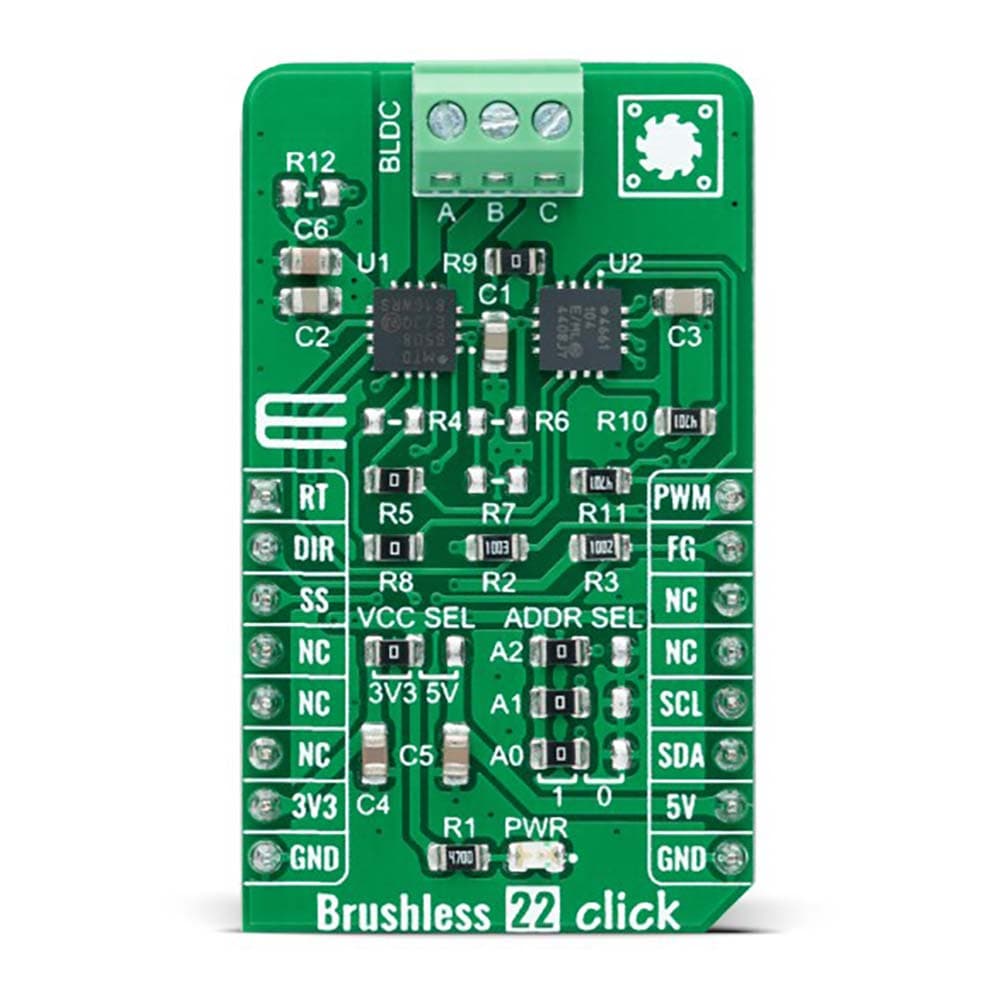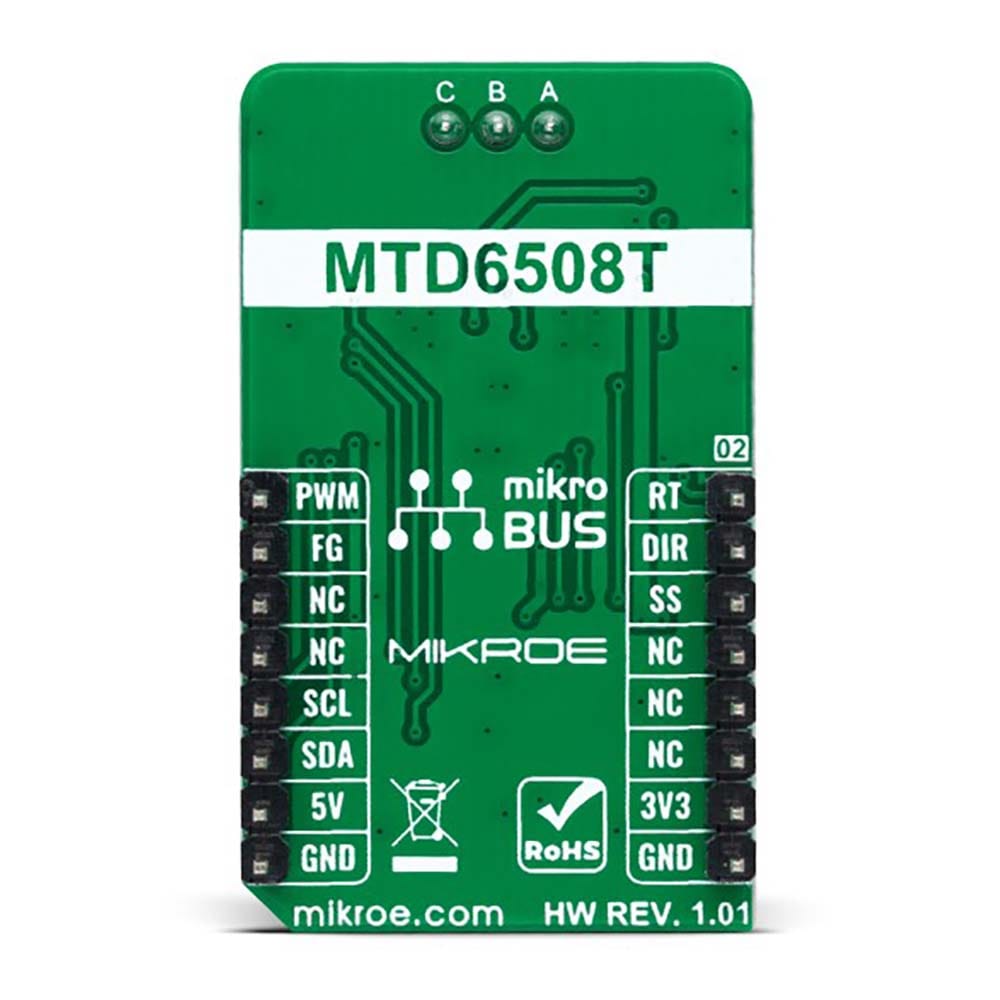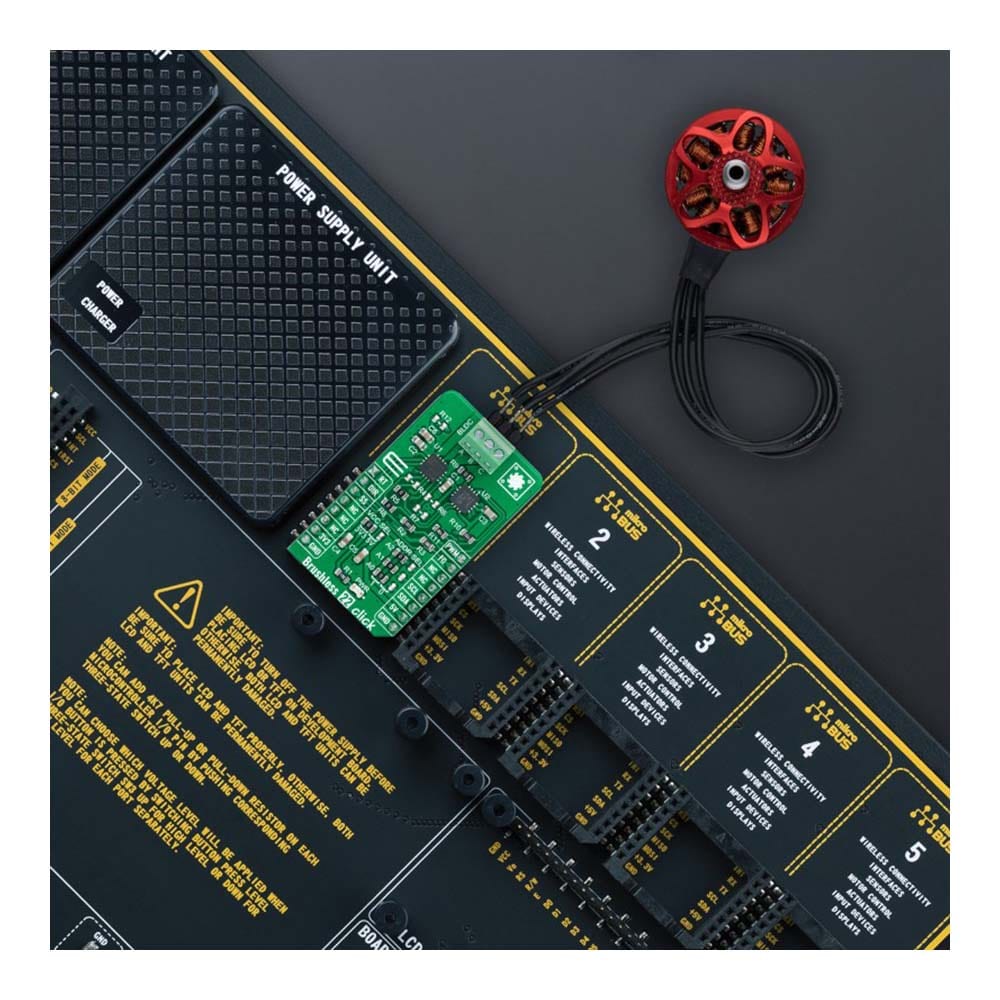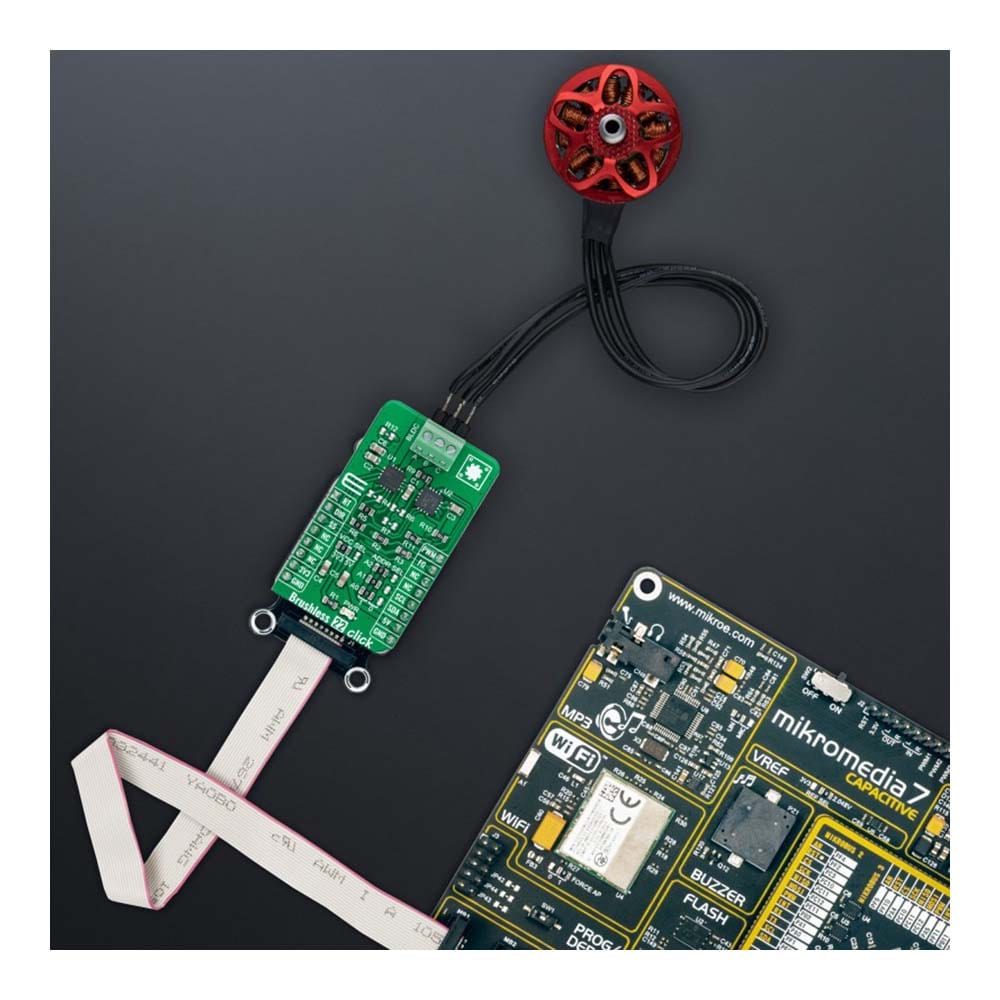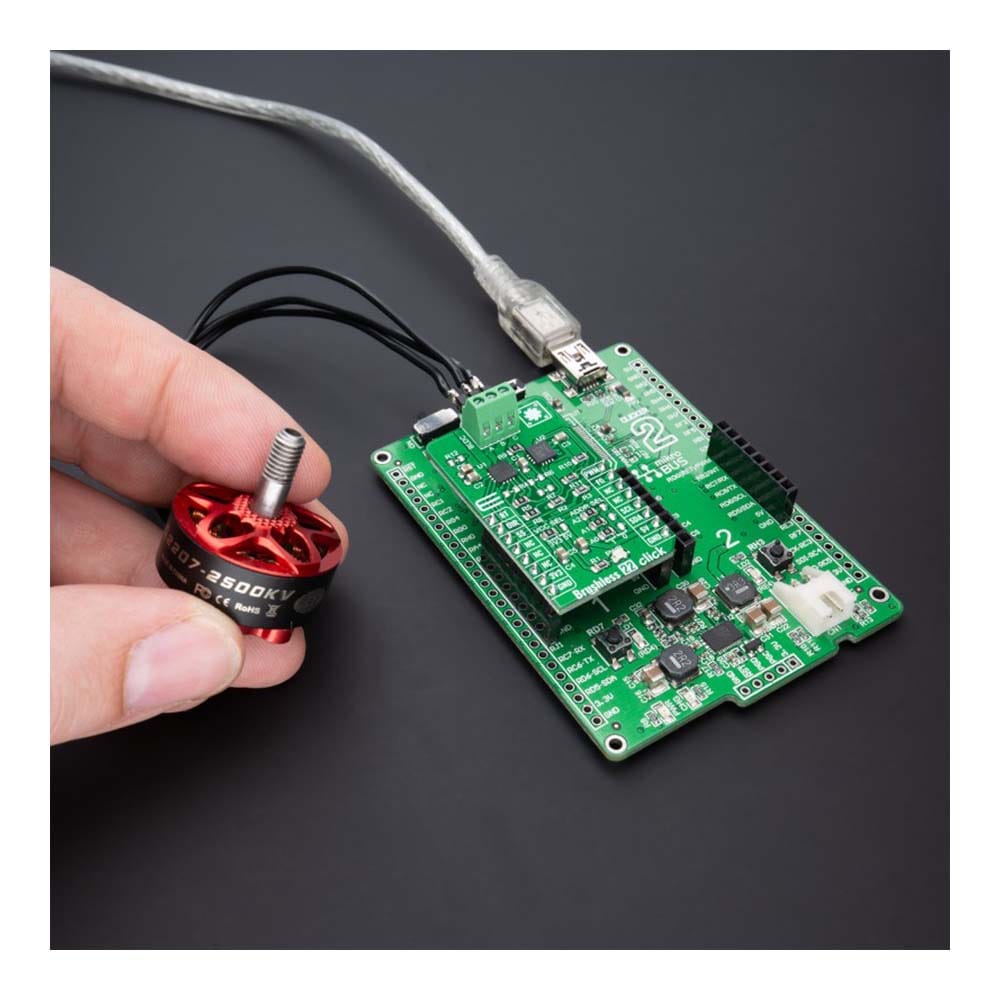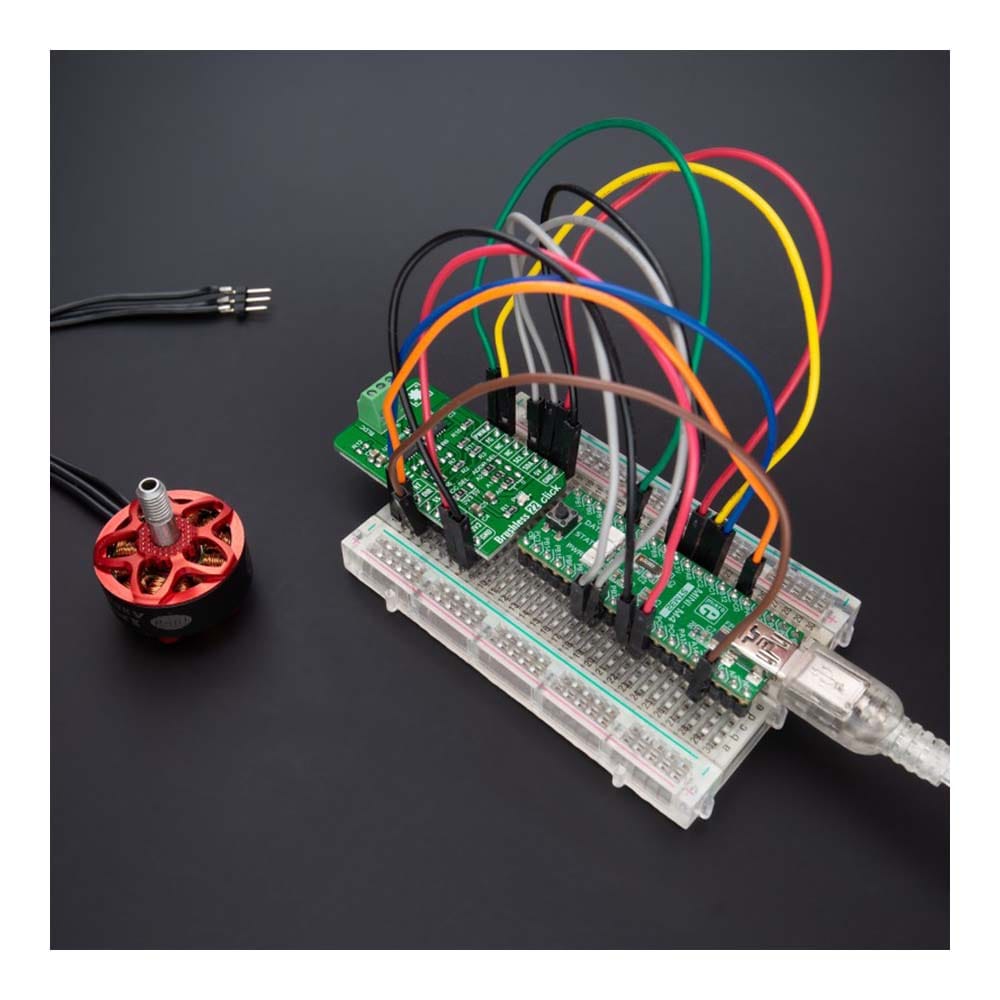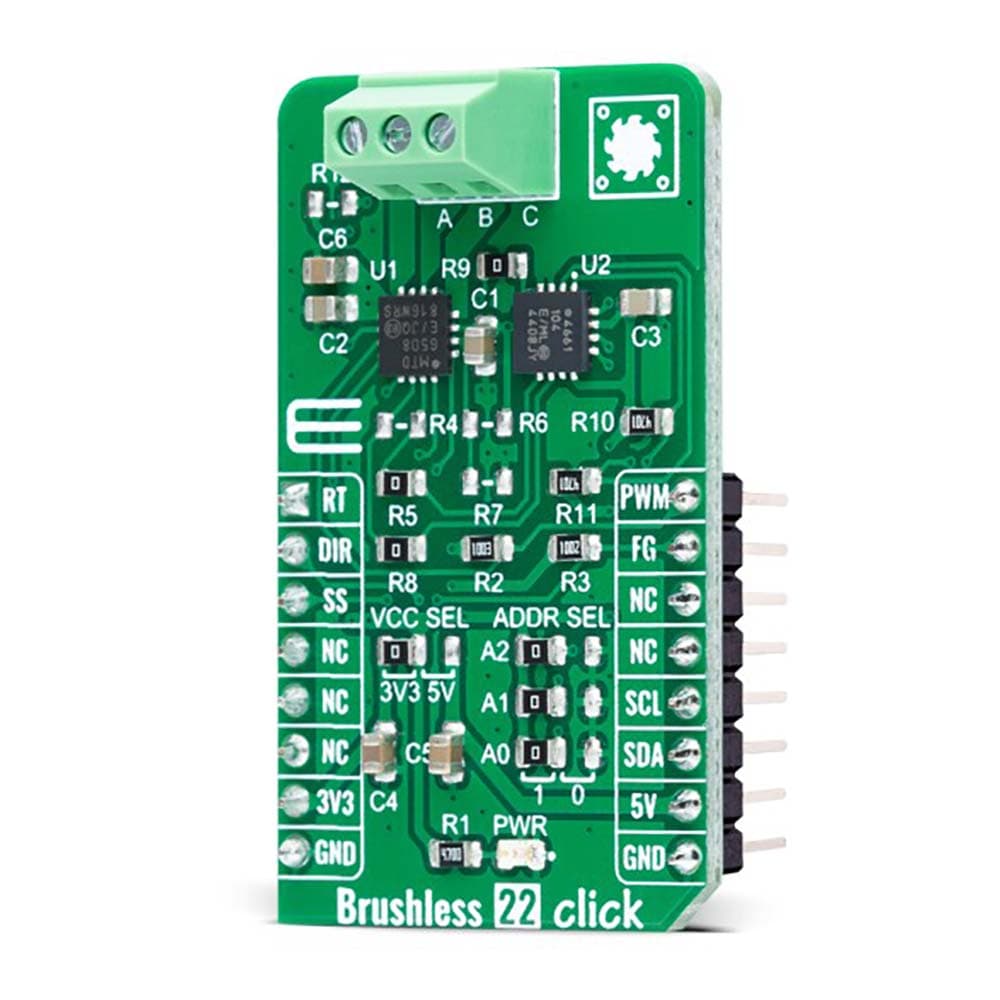

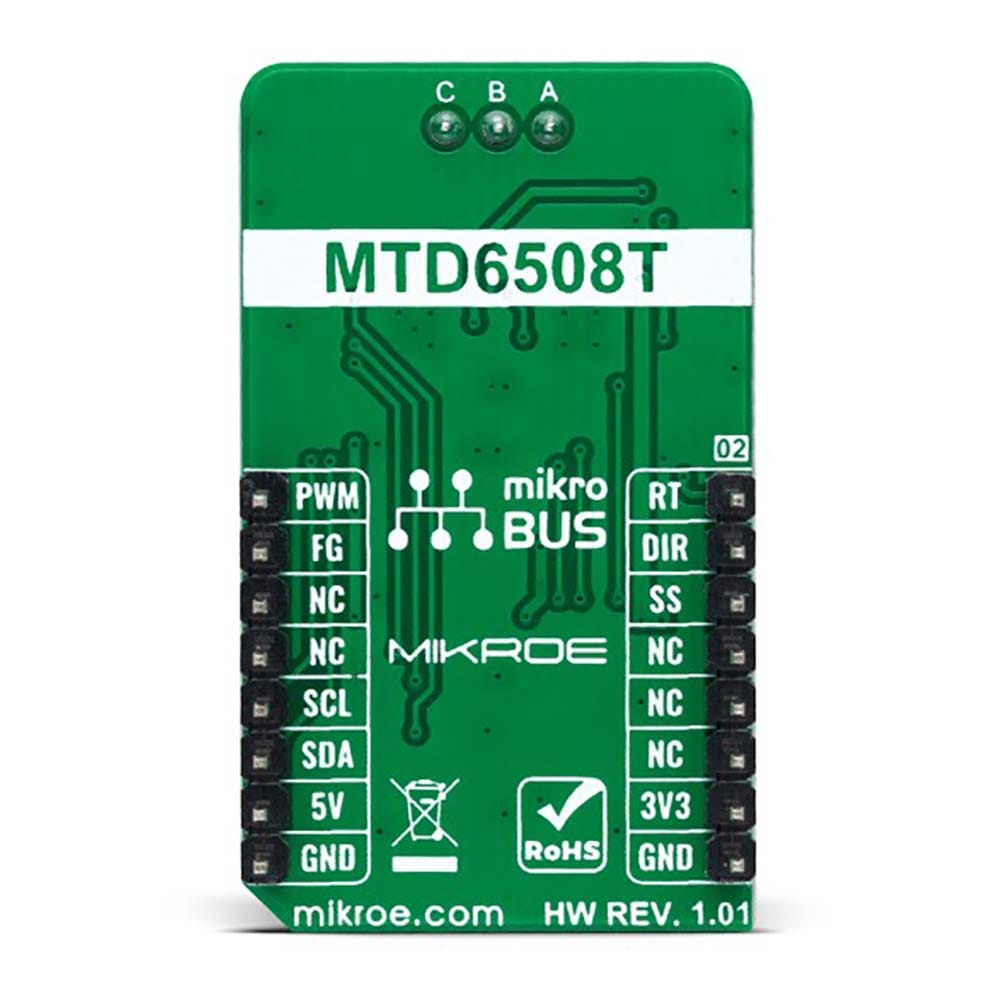
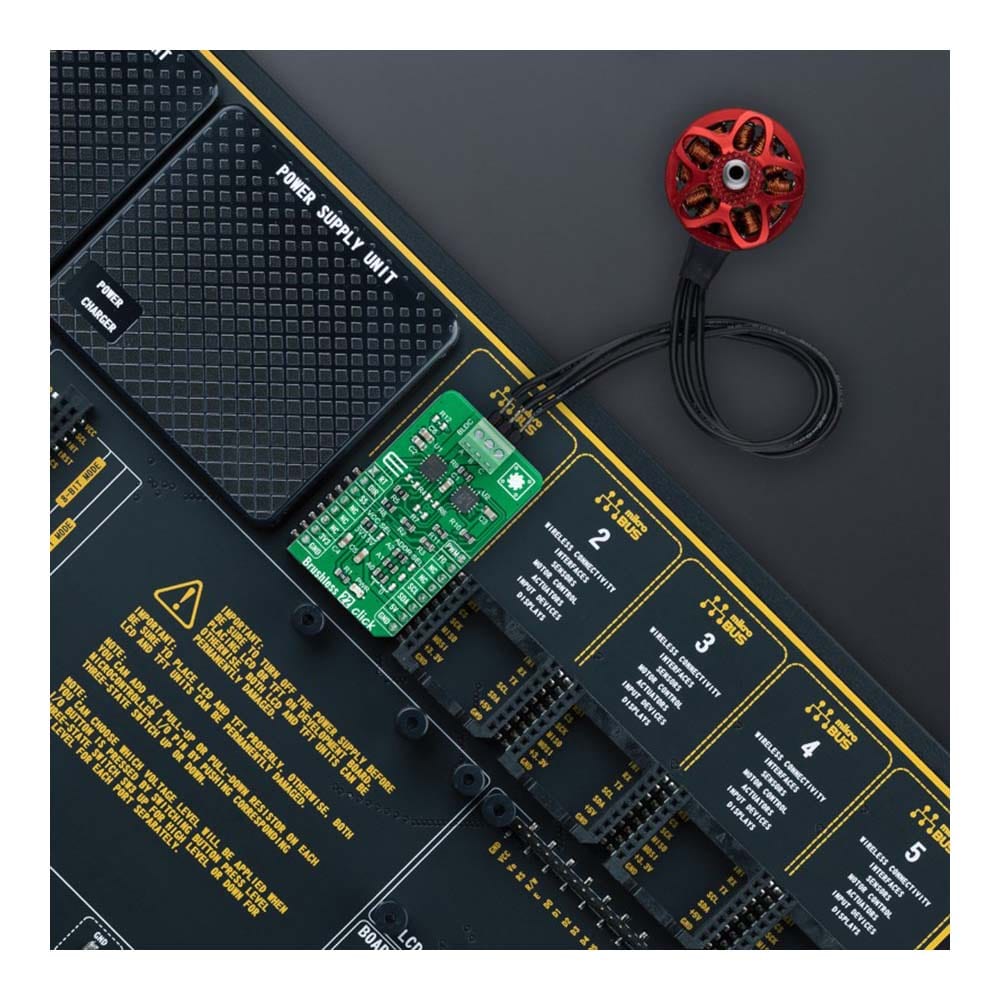
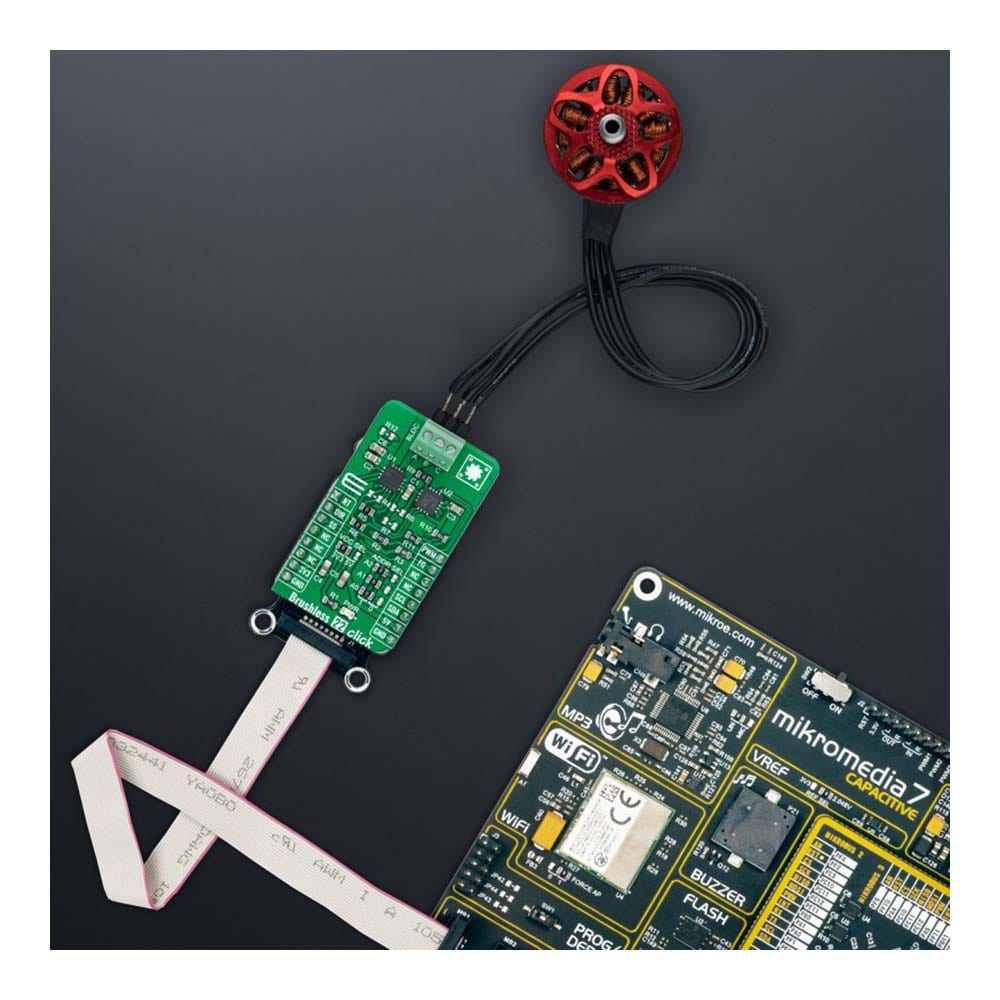
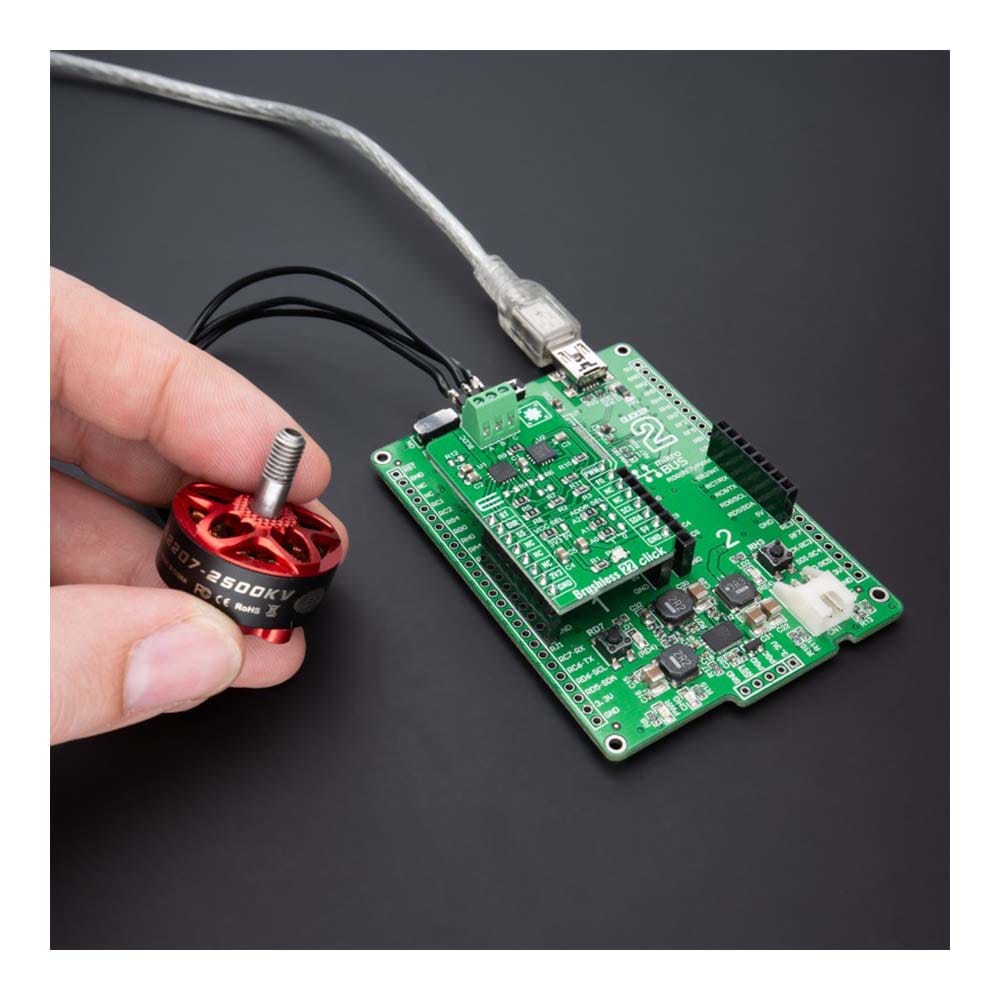
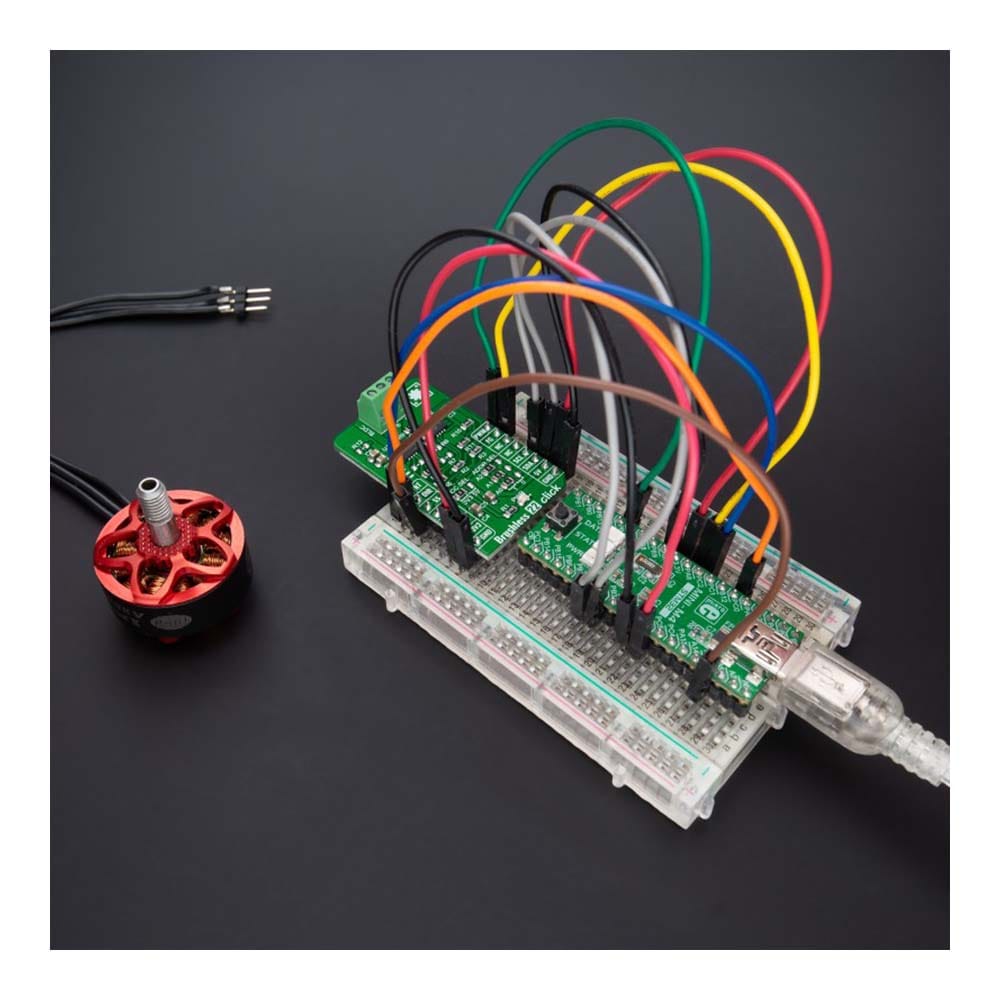
Key Features
Overview
The Brushless 22 Click Board™ is a compact add-on board suitable for controlling brushless DC (BLDC) motors with any MCU. This board features the MTD6508, a 3-phase full-wave sensor-less driver for BLDC motors from Microchip Technology. It features 180° sinusoidal drive, high torque output, and silent drive, rated for an operating voltage range including both mikroBUS™ power rails, and comes with speed control achieved through pulse-width modulation (PWM). Besides, it features several diagnostic circuits and drive-control functions such as motor lock protection, overcurrent limitation, and thermal shutdown protection. This Click board™ makes the perfect solution for home appliances and industrial equipment, such as cooling fans.
The Brushless 22 Click Board™ is supported by a mikroSDK compliant library, which includes functions that simplify software development. This Click board™ comes as a fully tested product, ready to be used on a system equipped with the mikroBUS™ socket.
Downloads
Das Brushless 22 Click Board™ ist eine kompakte Zusatzplatine, die sich zur Steuerung bürstenloser Gleichstrommotoren (BLDC) mit jedem MCU eignet. Diese Platine verfügt über den MTD6508, einen 3-phasigen sensorlosen Vollwellentreiber für BLDC-Motoren von Microchip Technology. Es verfügt über einen 180°-Sinusantrieb, ein hohes Drehmoment und einen leisen Antrieb, ist für einen Betriebsspannungsbereich ausgelegt, der beide mikroBUS™-Stromschienen umfasst, und verfügt über eine Drehzahlregelung durch Pulsweitenmodulation (PWM). Darüber hinaus verfügt es über mehrere Diagnoseschaltungen und Antriebssteuerungsfunktionen wie Motorblockierschutz, Überstrombegrenzung und thermischen Abschaltschutz. Dieses Click Board™ ist die perfekte Lösung für Haushaltsgeräte und Industriegeräte wie Kühlventilatoren.
Das Brushless 22 Click Board™ wird von einer mikroSDK-kompatiblen Bibliothek unterstützt, die Funktionen enthält, die die Softwareentwicklung vereinfachen. Dieses Click Board™ wird als vollständig getestetes Produkt geliefert und ist bereit für den Einsatz auf einem System, das mit der mikroBUS™-Buchse ausgestattet ist.
| General Information | |
|---|---|
Part Number (SKU) |
MIKROE-4995
|
Manufacturer |
|
| Physical and Mechanical | |
Weight |
0.02 kg
|
| Other | |
Country of Origin |
|
HS Code Customs Tariff code
|
|
EAN |
8606027389382
|
Warranty |
|
Frequently Asked Questions
Have a Question?
Be the first to ask a question about this.

